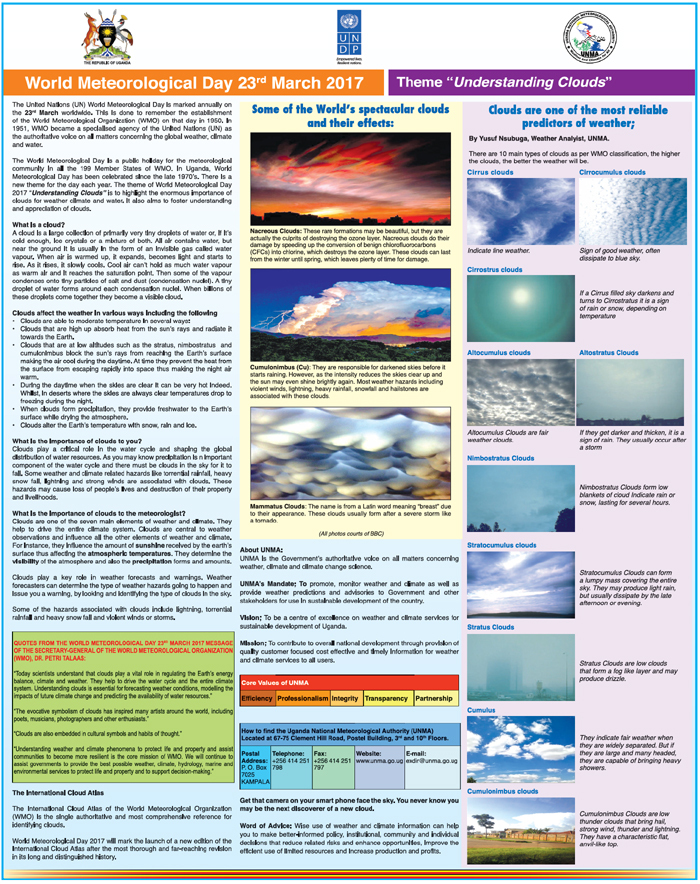World Meteorological Day
Mar 23, 2017
Weather and climate is, therefore, an important factor in the social and economic development of the country

The World Meteorological Day, which falls on March 23 will this year be celebrated in Bugema, Luwero district. This year's theme is "Understanding clouds." New Vision's Owen Wagabaza asked Festus Luboyera, the executive director of Uganda National Meteorological Authority (UNMA) about the authority's mandate and forecasts
Our forecasts are accurate — UNMA
Briefly tell us about the World Meteorological Day.
The World Meteorological Day is celebrated annually by all United Nations (UN) member states on March 23. The day is commemorated in remembrance of the World Meteorological Organisation (WMO) establishment on that date in 1950.
Since 1951, the WMO has been the UN's specialised agency for meteorology, operational hydrology and related geophysical sciences. WMO plays a crucial role in contributing to people's safety and welfare.
Its work is important in providing food security, water resources and transport. Although the WMO was founded in 1950, the day was first celebrated in 1961.
Many different activities and events are organised for this occasion. Among these are scientific and technical forums, conferences, a range of exhibitions, symposiums and debates on related topics.
In Uganda, the celebrations will take place at Bugema in Luwero, and here, we expect to talk about the year's theme which is Understanding clouds. We intend to help the population understand how clouds work.
What are clouds and how do they affect us?
Clouds are fundamental in precipitation and rain studies. They are a fundamental element on any discussion regarding weather and climate.
As a meteorologist for example, you need to understand the cloud formations, the directions from which winds are coming from to either support or destroy the formation of clouds.
Different clouds have different effects. For example, we have high clouds, mid clouds and low clouds and each one of these has a different role. In aviation, they are keen to know the level of clouds.
Here, it is important to know whether a cloud contains ice, droplets of water or if it is dry. Some clouds can be extremely dangerous such as the cumulonimbus clouds which are very high, and tricky for aviation.
If a plane cannot avoid such clouds, it may encounter turbulence because of the high speed of winds within the clouds. It is, therefore, important that we understand clouds, because they are part and parcel of our daily lives. CLICK HERE FOR MORE
ADVERTISER
World Meterological Day March 23, 2017. Theme "Understanding Clouds"

